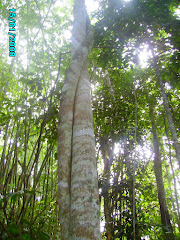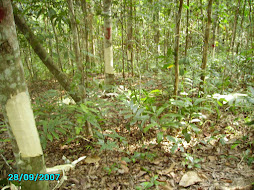CITES-PC Final Summary
ENB 10th Anniversary 1992-2002
EARTH NEGOTIATIONS BULLETIN
PUBLISHED BY THE INTERNATIONAL INSTITUTE FOR SUSTAINABLE
DEVELOPMENT (IISD)
Written and edited by:
Wendy Jackson
Alison Ormsby
Mark Schulman
Editor:
Pamela S. Chasek, Ph.D.
Director, IISD Reporting Services:
Langston James "Kimo" Goree VI
Vol. 21 No. 19
Monday, 20 May 2002
Online at: http://www.iisd.ca/linkages/cites/CITP2/
SUMMARY OF THE 12TH MEETING OF THE CITES PLANTS COMMITTEE:
13-16 May 2002
AQUILARIA SPP.: On Thursday, 16 May, Barbara Gravendeel, Leiden
University, presented on a CITES-funded study to develop species-
specific DNA markers in agarwood (Aquilaria) (PC12/Inf. 1).
Describing the basic characteristics of the 15 Aquilaria species,
she explained that the wood can be infected by a fungus that
produces a resin (gaharu) used in rituals, medicines and perfume.
She said gaharu is highly priced and global demand is higher than
available supply, and that only one species of Aquilaria is on
Appendix II. She noted that because gaharu-containing wood is
usually traded as dry samples, it cannot be identified at the
species level. She stated that there are few species- and region-
specific mutations in Aquilaria, and that further work is
necessary to isolate DNA in wood samples and to develop an easy-
to-apply test for customs officials.
Europe inquired about the time required to develop the test.
Gravendeel responded that six months are needed if fresh samples
are available, although there are difficulties when working with
old or contaminated wood. Mexico inquired about identification of
species based on gaharu’s phytochemical characteristics. Oceania
asked if there is trade information on other gaharu-producing
genera.
TRAFFIC introduced a document on agarwood (PC12/Doc. 8.3), noting
the increasing importance of DNA testing in distinguishing
species. He identified several recommendations, including, inter
alia, the need for ground-truthing of populations in agarwood
harvesting areas, and further field research on gaharu trade
dynamics. Oceania emphasized the need for a reporting mechanism
and links with traders to understand the total agarwood trade. He
added that Aquilaria could be a good candidate for the significant
trade review process. Several delegates said an Appendix III
listing could be appropriate. The Secretariat said the main
advantage of an Appendix III listing is that the countries of
export and import may eliminate the illegal trade. Central and
South America and the Caribbean called for further taxonomic
efforts to assess the species. The Committee agreed to support the
recommendations made by TRAFFIC, and the Chair will include the
comments in her report to COP-12.
Saturday, June 14, 2008
CITES-PC
Subscribe to:
Post Comments (Atom)


1 comment:
salam.. apa khabar...
Post a Comment